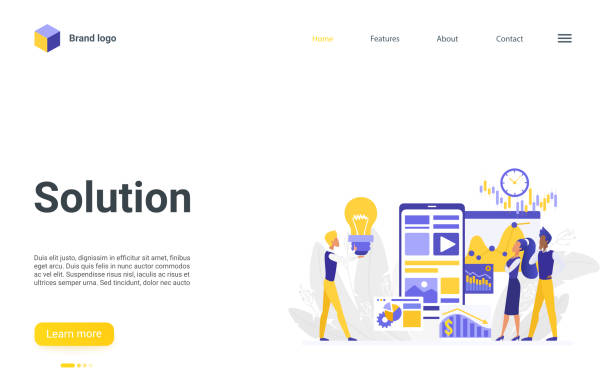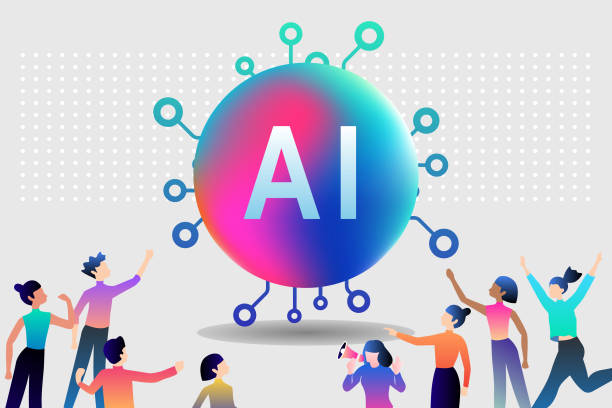Introduction to the Importance of Modern UI Website Design

In today’s digital world, where competition to attract and retain audiences has reached its peak, #Modern_UI_Website_Design is no longer an advantage, but a necessity.
This type of design, beyond visual aesthetics, addresses the user’s overall experience from the moment they enter the site until they achieve their goal.
Websites are no longer just digital storefronts; they are platforms for interaction, engagement, and converting audiences into customers.
An up-to-date User Interface (UI) and a smooth, hassle-free User Experience (UX) can make the difference between the success and failure of an online business.
When we talk about modern UI website design, we mean creating a digital space that is not only visually appealing but also understandable, easy to navigate, and enjoyable for users to use.
This approach ensures that users spend more time on your site, easily access the information they need, and ultimately achieve the site’s ultimate goal (whether it’s purchasing, signing up, or obtaining information).
User Interface and User Experience are two main pillars in this path that, together, transform a website into a powerful tool for communicating with the audience.
This importance becomes more evident when we consider that today’s users quickly get tired of sites that are complex, slow, or unappealing.
Therefore, investing in modern UI website design is, in fact, an investment in the future of the business and customer loyalty.
This type of design helps your website stand out in the sea of digital competition and establish a meaningful connection with your audience.
A well-designed site not only attracts visitors but also converts them into loyal customers.
Does your company’s website create a professional and lasting first impression on potential customers? Rasawab, with its professional corporate website design, not only represents your brand’s credibility but also paves the way for your business growth.
✅ Create a powerful and reliable brand image
✅ Attract target customers and increase sales
⚡ Get free consultation
Key Principles of User Experience (UX) in Modern Design
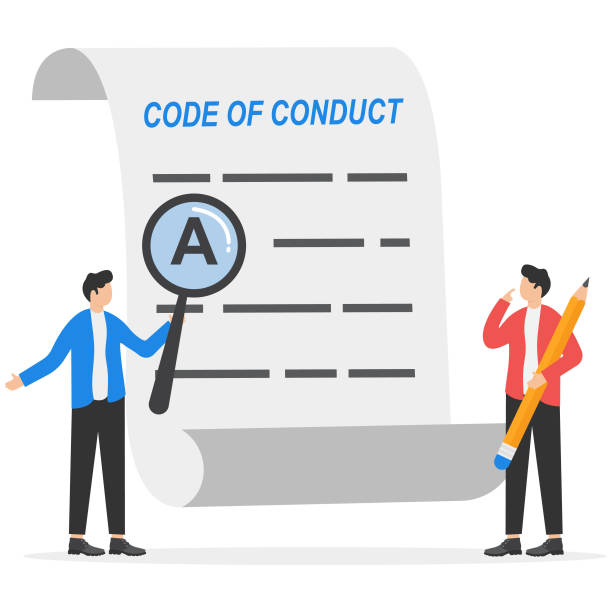
At the heart of every modern UI website design lie the strong principles of User Experience (#UX).
UX is not just about visual aesthetics; it’s about how the user feels when interacting with your website.
The first principle is #User_Understanding.
You need to know who your audience is, what their needs are, and what problems they want to solve.
This understanding is gained through user research, questionnaires, and behavioral data analysis.
After understanding, #Simplicity_and_Usability become important.
A modern user interface should be free of any unnecessary complexity.
Navigation should be intuitive and logical, so that the user can reach their goal without needing to think too much.
Removing unnecessary elements, using simple language, and presenting information step-by-step are among the solutions to achieve this goal.
The third principle is #Consistency_and_Harmony.
All pages and elements on the website should follow a specific design style, color palette, and font.
This consistency gives the user a sense of familiarity and trust and prevents confusion.
For example, Call-to-Action (CTA) buttons should be displayed with a consistent appearance across all pages.
Accessibility (#Accessibility) is another fundamental principle.
A modern website must be accessible to all users, regardless of their physical abilities or the device used.
This includes using alternative text for images, appropriate color contrast, and keyboard navigation capability.
Finally, #Instant_Feedback is crucial.
Users should always know what is happening; whether their form has been successfully submitted, a product has been added to their cart, or an error has occurred.
This feedback can be in the form of confirmation messages, loading indicators, or error notifications.
Adhering to these principles in modern UI website design not only improves the user experience but also increases conversion rates, reduces bounce rates, and ultimately leads to the success of your online business.
These principles form the foundation for building a user-friendly and effective website.
Visual Elements of Modern User Interface (UI)
![]()
When it comes to modern UI website design, #Visual_UI_Elements (#UI) play a vital role.
These elements form the look and feel of your site and directly influence the #User_First_Impression.
One of the most important is the #Use_of_Whitespace.
Whitespace refers to the empty spaces between visual elements that allow the user’s eye to breathe and focus on key elements.
This makes the content appear less cluttered and increases readability.
In modern UI design, #Typography has special importance.
Choosing appropriate fonts, font size, line spacing, and contrast with the background all play a role in readability and visual aesthetics.
Modern fonts are usually clean, clear, and highly readable in various sizes.
The #Color_Palette is another key element.
A harmonious and appealing color palette not only makes the website beautiful but can also evoke specific emotions in the user and reflect your brand identity.
Smart use of colors for Call-to-Action (CTA) buttons or highlighting important information is very effective.
#Icons_and_High-Quality_Images are powerful visual elements that can convey messages faster than text and add to the site’s appeal.
Minimalist icons and relevant, high-quality images complement a modern UI website design.
#Micro-interactions, though small, have a great impact on the user experience; for example, a small effect when clicking a button or hovering over an element.
These small details make the site appear more dynamic and alive.
Ultimately, attention to #Visual_Harmony_and_Rhythm between all these elements is key to creating an attractive and effective user interface.
To better understand the importance of visual elements and how they affect the user experience, we will detail the impact of each element:
| Visual Element | Impact on UI/UX | Important Design Notes |
|---|---|---|
| Whitespace | Increased readability, reduced clutter, improved focus | Creating balance between elements, smart use of negative space |
| Typography | Improved readability, brand identity conveyance, visual aesthetics | Choosing legible fonts, appropriate contrast, visual hierarchy |
| Color Palette | Conveying emotions, highlighting, brand identity | Using color theory, sufficient contrast, limited number of colors |
| Icons and Images | Fast message conveyance, visual appeal, increased comprehension | High quality, relevance, adherence to consistent visual style |
| Micro-interactions | Increased sense of dynamism, visual feedback, making the experience enjoyable | Small and subtle, relevant to function, non-distracting |
This table is a visual guide for modern UI website design and shows how each visual element mutually affects the overall user experience, and their correct combination can transform a website from ordinary to outstanding.
Responsiveness and Responsive Design

One of the fundamental pillars in #Modern_UI_Website_Design is the concept of #Responsiveness or #Responsive_Design.
In the current era, users access web content using a variety of devices, including smartphones, tablets, laptops, and even smart TVs.
Therefore, a website must be able to display flawlessly and with an optimized experience on each of these devices.
Responsive design means that the website’s layout and content automatically adjust to the screen size of the user’s device.
This includes resizing images, fonts, column order, and navigation elements to provide the best possible experience.
Failure to ensure responsiveness not only harms the user experience but can also negatively impact the site’s SEO, as search engines like Google prioritize mobile-friendly websites in their ranking.
To achieve a modern UI website design that is fully responsive, using Media Queries in CSS, using relative units (such as percentages or em) instead of fixed units (such as pixels) for sizing, and a Mobile-First approach is recommended.
In the Mobile-First approach, design is first created for the smallest screen (usually mobile) and then progressively developed for larger screens.
This approach ensures that the most important content and functionalities are easily accessible in the mobile version as well.
#Page_Loading_Speed also becomes doubly important on mobile devices; mobile users are usually impatient and expect the website to load quickly.
Therefore, optimizing images and CSS/JavaScript code to ensure fast loading on all devices is essential.
The importance of responsiveness in modern UI website design is undeniable; this feature not only meets user expectations but also helps businesses have a strong presence in various markets (desktop and mobile) and maximize their reach to audiences.
Given the growing trend of mobile usage, investing in responsive design is an investment in the future.
Does your current website build the trust that potential customers should have in your business? If the answer is no, it’s time to have your professional and influential corporate website with Rasawab.
✅ Fully custom design tailored to your brand identity
✅ Increased lead generation and business credibility in the eyes of customers⚡ Contact us for a free consultation!
Importance of Loading Speed and Optimization
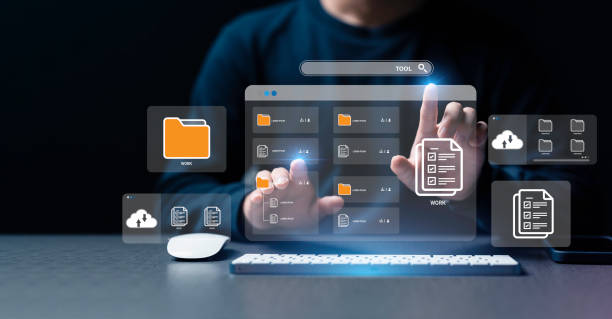
Alongside #Aesthetic_Design and #User-Friendly design, #Website_Loading_Speed is one of the most critical factors in evaluating the quality of a modern UI website design.
Studies have shown that even a one-second delay in page loading can lead to a significant reduction in conversion rates, an increase in Bounce Rate, and user dissatisfaction.
Today’s users are more impatient than ever and expect content to display immediately after clicking.
This issue is particularly important on mobile devices with less stable internet connections.
Optimizing loading speed not only improves the user experience but also directly impacts SEO.
Search engines like Google consider loading speed as a ranking factor and place slower websites lower than faster competitors.
To achieve a fast-loading website consistent with modern UI design standards, there are several solutions.
The first step is #Image_Optimization.
High-volume images are one of the main reasons for slow site speed.
Using appropriate image formats (like WebP), compressing images without significant quality loss, and Lazy Loading can drastically reduce loading time.
The next step is #Code_Minification.
CSS, JavaScript, and HTML files can be minified to reduce their size.
Also, using browser and server caching can help reduce loading time for repeated visits.
#Reduced_HTTP_Requests and using Content Delivery Networks (#CDN) are also effective methods.
A CDN stores your website’s content on various servers worldwide and delivers it from the closest server to the user, which significantly increases speed.
Finally, choosing #Suitable_Hosting also plays a key role in website speed.
All these measures combined transform a modern UI website design into a smooth, fast, and enjoyable user experience that not only satisfies users but also significantly helps your business succeed and be seen in the online space.
Investing in speed is investing in success.
Psychology of Color and Font in Modern Design

In the context of #Modern_UI_Website_Design, #Color_Psychology and #Font_Psychology are two incredibly important and influential areas that go beyond mere aesthetics and directly impact users’ emotions, behavior, and decision-making.
The correct choice of colors can strengthen your brand message, build trust, or even influence the desire to purchase.
For example, blue is often associated with trust, security, and professionalism and is frequently seen on financial and corporate websites.
Green symbolizes nature, growth, and freshness and is suitable for environmental or health-related brands.
Red can convey passion, excitement, and urgency and is useful for Call-to-Action (CTA) buttons or special offers.
Excessive use of strong colors or inappropriate color palettes can lead to eye strain and even deter users.
A modern UI design uses a limited number of primary colors and creates visual variety through different shades and tones.
In addition to color, #Typography is also of particular importance.
Fonts convey the personality and tone of your message.
A serif font might convey a sense of tradition and authority, while a sans-serif font conveys a sense of modernity, simplicity, and efficiency.
Choosing the right font for headings, body text, and buttons is crucial.
Readability must be the primary priority; fonts should be easily readable in various sizes, especially on mobile devices.
Sufficient contrast between text and background, line height, and letter spacing all contribute to readability.
A professional web designer in modern UI website design must have a deep understanding of these psychological principles.
This understanding helps them not only create a beautiful site but also build a site that is functionally effective and guides users towards business goals.
The intelligent combination of color and font creates a strong visual identity that remains memorable in the audience’s mind and significantly improves the overall user experience.
UI Testing and Evaluation
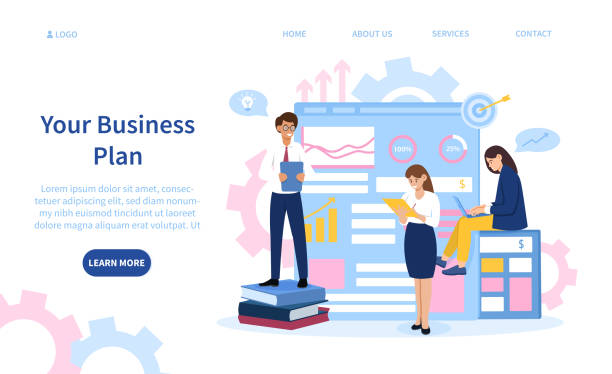
After implementing a modern UI website design, the critical stage of #UI_Testing_and_Evaluation arrives.
Without testing, there is practically no way to ensure that your design truly functions as #User-Friendly and #Flawless.
The main goal of testing is to identify issues and weaknesses in the User Experience (UX) and User Interface (UI) before these problems affect real users.
One of the most important methods is #Usability_Testing.
In this method, real users (who represent your target audience) interact with the website and perform specific tasks.
Designers and researchers observe their behavior and collect their feedback.
This feedback can include navigation issues, confusion about content, or a lack of understanding of functionalities.
A/B testing is another powerful tool that allows you to simultaneously display two different versions of a page or an element (such as a call-to-action button) to two groups of users and compare their performance.
This method helps you make data-driven decisions for design optimization.
#Expert_Review or Heuristic Evaluation also involves reviewing the website by UX specialists based on accepted design principles.
This method can quickly identify obvious problems.
Additionally, web analytics tools like Google Analytics allow you to anonymously track user behavior; information such as bounce rate, time spent on page, navigation paths, and conversion rates provide valuable insights for improving modern UI website design.
#Heatmaps and #User_Session_Recordings can also show you where users click, how much they scroll, and where they stop.
To better organize the testing and evaluation process for improving #Modern_UI_Website_Design, the following table can be used:
| Test Method | Description | Advantages | Potential Disadvantages |
|---|---|---|---|
| Usability Testing | Observing real users performing specific tasks on the site | Direct feedback, identifying real user issues | Time-consuming, requires suitable user sample |
| A/B Testing | Comparing two versions of an element to determine better performance | Data-driven decision-making, continuous optimization | Requires high traffic, only for small changes |
| Expert Review (Heuristic Evaluation) | Site review by UX specialists based on design principles | Fast and low-cost, identifying obvious issues | May miss real user issues |
| Web Analytics Tools (Google Analytics) | Tracking user behavior and site performance metrics | Accurate quantitative data, identifying behavioral patterns | Requires data interpretation, doesn’t provide “why” |
Regular and systematic execution of these tests and evaluations creates a continuous feedback loop that allows you to continuously improve your modern UI website design and provide an unparalleled experience for users.
New Trends in UI/UX Design
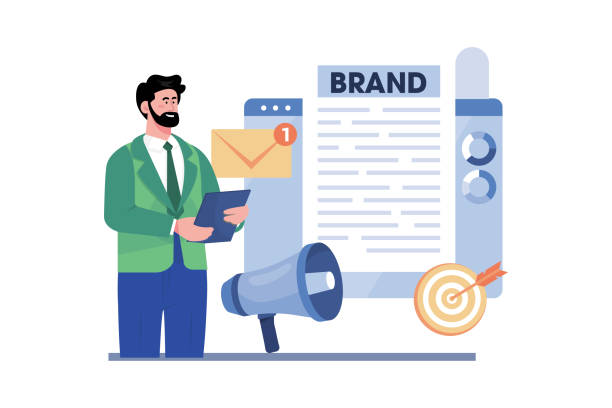
The world of #Web_Design, especially #Modern_UI_Website_Design, is constantly evolving.
Keeping pace with #New_UI/UX_Trends is essential to maintain competitiveness and provide an up-to-date and engaging experience for users.
One of the most important trends is #Dark_Mode_Design.
Many users prefer to use dark themes in low-light environments, which is both easier on the eyes and helps reduce battery consumption on OLED devices.
Offering a dark mode option to users demonstrates attention to #User_Choice_and_Comfort.
#3D_Images_and_Complex_Animations are also becoming widespread.
With the advancement of web technology, the use of realistic 3D renders and smooth, captivating animations adds more depth and appeal to websites and makes the user experience more exciting.
This trend has gained popularity especially on product and portfolio sites.
Minimalist_Design_and_Simplicity (#Minimalism) remains a fundamental principle in modern UI website design, but with a more sophisticated approach focusing on details.
Removing unnecessary elements and focusing on core content helps users access the information they need without distraction.
#Immersive_and_Interactive_Experiences are also growing, such as using Augmented Reality (AR) on websites to preview products in real space or Gamification to increase user interaction.
#Voice_Design_and_Voice_UI are gradually gaining ground, especially with the growth of voice assistants and voice search capabilities.
This trend shows that modern UI website design is not limited to visual elements but also includes auditory and even haptic interactions.
Finally, #Personalization of content and user experience based on user behavior and preferences has become a standard.
This approach helps websites establish a deeper connection with users and provide them with more relevant content.
Keeping up with these trends not only keeps your website up-to-date but also demonstrates your innovation and commitment to providing the best user experience.
Do you have an e-commerce site but your sales are not as expected? Rasawab solves your problem forever with professional e-commerce website design!
✅ Significant increase in conversion rates and sales
✅ Unparalleled user experience for your customers
⚡ Click to get a free consultation with Rasawab!
Challenges and Solutions for Modern UI Website Design
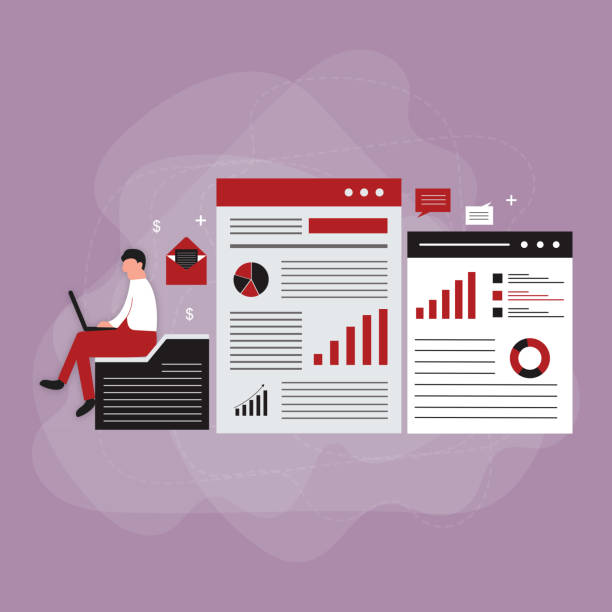
Although #Modern_UI_Website_Design offers countless advantages, its implementation path is not free from #Challenges.
One of the biggest challenges is #Keeping_Pace_with_Rapid_Technological_Changes and trends.
What is modern today may be obsolete tomorrow.
The solution is for designers and development teams to constantly learn, follow conferences, and utilize new educational resources.
Another challenge is #Balancing_Aesthetics_and_Functionality. A site might be visually stunning, but if it’s not easy to use or is slow, it loses its value.
The solution is to perform UI and UX design in parallel, with close collaboration between different teams.
#User_Centricity should be the main focus throughout all design and development stages.
#Compatibility_with_Different_Devices (responsiveness) is also a complex technical challenge, especially with the myriad of screen sizes and browsers.
Using responsive frameworks and rigorous testing on multiple devices is the solution to this challenge.
The #Next_Challenge_is_Accessibility for all users. Ensuring that the website is usable for people with disabilities requires specialized knowledge and adherence to WCAG standards.
This is not only an ethical responsibility but can also expand your target market.
Maintaining #Optimal_Loading_Speed while using advanced graphics and animations, is also a common problem.
Using optimized images, clean coding, compression, and CDN can largely resolve this issue.
Finally, #Customer_Expectation_Management and educating them about the importance of UX/UI is also a significant challenge.
Some clients may only care about the appearance and be unaware of the impact of the user experience on their business.
Providing data and statistics and logically justifying design decisions helps solve this challenge.
By recognizing these challenges and implementing appropriate solutions, a modern UI website design can be successfully implemented and its benefits reaped.
This process is a continuous commitment to improvement and evolution.
The Future of Web Design and the Role of Modern UI

The #Future_of_Web_Design is inextricably linked to the #Evolution_of_UI and #User_Experience (#UX).
As new technologies emerge, #Modern_UI_Website_Design is expected to change in unexpected ways and take on new dimensions.
One significant outlook is #More_Immersive_and_Non-Textual_Interactions.
With the advancement of Artificial Intelligence (#AI) and Machine Learning (#ML), websites will become smarter and be able to provide more personalized interactions.
Voice search, gesture-based user interfaces, and even Brain-Computer Interfaces (BCI) that enable interaction with websites through user thoughts, may become a reality in the near future.
These advancements will expand our definition of modern UI design.
Augmented Reality (AR) and Virtual Reality (VR) will also play a more prominent role in web design. Imagine being able to view a product in your home in 3D through a web browser or immerse yourself in a virtual store.
These technologies provide entirely new user experiences that go beyond today’s flat and static pages.
Also, #Sustainable_Web_Design will become an important principle.
Given environmental concerns, designers and developers are moving towards creating websites that are more energy-efficient, use lighter code, and greener servers.
This approach ultimately helps improve speed and efficiency and is therefore consistent with the principles of #Modern_UI_Website_Design.
#Increased_Focus_on_User_Privacy and data security will also be key points in the future.
Designers must create websites that, while providing an excellent user experience, also respect user privacy and protect their data.
Ultimately, the future of modern UI website design revolves around creating more human, intelligent, and sustainable experiences.
Websites will become platforms that not only provide information but also actively interact with users, anticipate their needs, and offer innovative solutions.
Being prepared for these changes and investing in new knowledge and skills will be the key to success in tomorrow’s digital world.
Frequently Asked Questions
| Row | Question | Answer |
|---|---|---|
| 1 | What is meant by “modern UI website design”? | It refers to designing a website that utilizes the latest trends and best practices in User Experience (UX) and User Interface (UI) to make user interaction simple, engaging, and efficient. |
| 2 | Why is a modern UI important for a website? | A modern UI increases user satisfaction, improves conversion rates, extends user time spent on the site, and creates a professional and up-to-date brand image. |
| 3 | What are the key elements of a modern UI? | Key elements include simplicity and minimalism, responsiveness, use of white space, engaging typography, subtle animations, an appropriate color palette, and intuitive navigation. |
| 4 | What role does responsiveness play in modern UI design? | Responsiveness ensures that the website displays correctly on any device (mobile, tablet, desktop) and provides a seamless user experience, which is essential for modern UI. |
| 5 | How important is typography in modern UI design? | Typography plays a very important role in readability, visual hierarchy, and brand visual identity. Modern fonts and their combinations can contribute to the overall aesthetics and appeal of the site. |
| 6 | How are animations and micro-interactions used in modern design? | Animations and micro-interactions are used to create visual feedback, guide the user, and add a sense of dynamism and appeal to the UI, provided they are not excessive. |
| 7 | What is the role of User Experience (UX) in modern UI design? | UX is the foundation of modern UI. A modern design must first be functional, understandable, and enjoyable (UX), and then beautiful and appealing (UI). |
| 8 | What tools are used for modern UI design? | Tools such as Figma, Adobe XD, Sketch, and InVision are used for design, and frameworks like React, Vue.js, or Angular are used for implementation. |
| 9 | How can overly complex design be avoided in modern UI? | By focusing on minimalism, removing unnecessary elements, using abundant white space, and adhering to the “Less is More” principle. |
| 10 | What is the importance of user testing in modern UI design? | User testing ensures that the designed UI is truly useful, understandable, and appealing to users, and that potential issues are resolved before launch. |
And other services of Rasawab Advertising Agency in the field of advertising
Smart Advertising Campaign: Transform user interaction with custom programming.
Smart Custom Software: A combination of creativity and technology to increase click-through rates by using real data.
Smart Direct Marketing: Revolutionize user interaction with an SEO-driven content strategy.
Smart Direct Marketing: An innovative service for improving SEO ranking through Google Ads management.
Smart Marketing Automation: A specialized service for online growth based on custom programming.
And over hundreds of other services in the field of internet advertising, advertising consultation, and organizational solutions
Internet Advertising | Advertising Strategy | Advertorials
Resources
- Comprehensive Website Design Guide
- Articles: Modern User Interface on the Web
- Blog: Advanced User Experience Design
- How to Build a Website with Beautiful UI
? Ready to revolutionize your business in the digital space? Rasawab Afarin Digital Marketing Agency, by providing comprehensive services including modern UI website design and SEO optimization, is with you on the path to achieving online success.
📍 Tehran, Mirdamad Street, next to Bank Markazi, Kazeroun Jonoubi Alley, Ramin Alley No. 6

